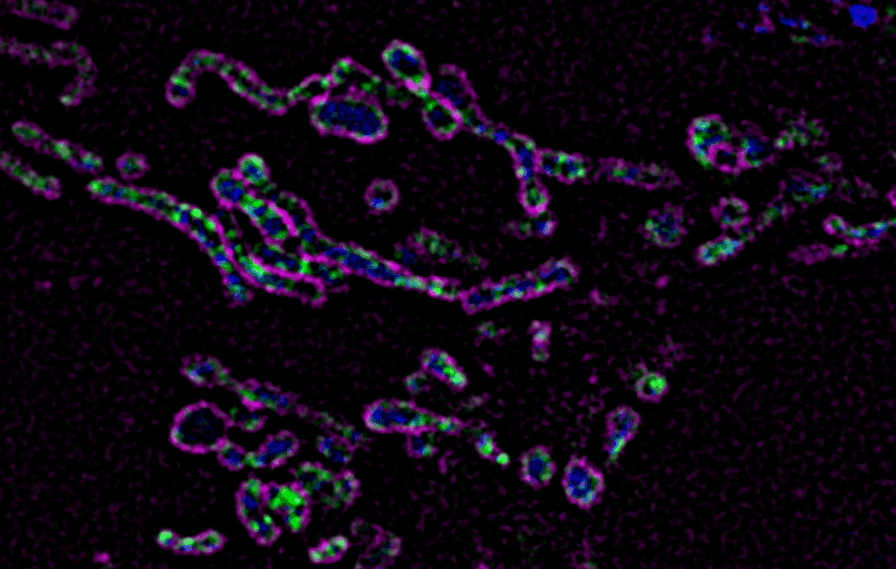
Our Research.
We aim to understand how cell death is inflammatory and use this knowledge to better treat human diseases.
Mitochondrial DNA is released during cell death
Cell death usually does not provoke an immune response. Due to their bacterial origins, mitochondria possess their own genome called mitochondrial (mt)DNA. Our bodies react to this in a similar way to “foreign” bacteria, and mount a rapid response to warn surrounding cells. Using super-resolution microscopy, we found that mtDNA can be released from mitochondria during cell death, invoking this immune response. Understanding this process could help to develop better treatments for cancer, and could be the cause of some auto-inflammatory diseases.
Understanding how cell death signalling can promote cancer
The usual outcome of cell death is complete destruction of the cell. We have shown that under conditions of sub-lethal stress the cell death machinery is only partially engaged and the cell stays alive (a process we called “minority MOMP”). However, the cell accumulates DNA damage and becomes genomically unstable, which can transform the cell into a cancer cell. We recently showed that mitochondrial dysfunction is the underlying basis of this process, since “unwell” mitochondria become more likely to undergo permeabilisation. Given that minority MOMP has roles in innate immunity and inflammation, as well as cancer, we can use these findings to modulate minority MOMP.
Our Approach
We use existing methods to understand inflammatory cell death, and we are rapid adopters of new technologies and tools to answer biological questions.
Super-resolution microscopy
Live cell imaging
Mass spectrometry
Transcriptomics
Cell culture
Optogenetics
Genome editing
Advanced models of cancer
Bioinformatics
Cell biology
Flow cytometry
Image analysis
Current Funding
Work in the Cell Death & Inflammation lab is gratefully supported by:
FWF/Austrian Science Fund: Research Group "BEAT-IT" - BCL-2 Network Adaptations in B Cell Transformation
TWF/Tyrolean Science Fund: Using advanced microscopy to understand cell death

